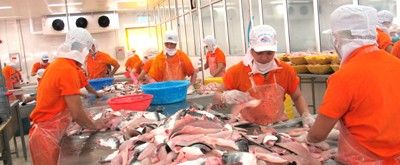Boosting exports to China through official channel
22/11/2016
Vietnam - China trade relations have developed both in width and in depth. The two-way trade value has been on the steady rise, with many years beating expectations of both nations. Besides, Vietnam is advancing its international integration, powered by the Trans-Pacific Partnership (TPP), and bilateral and multilateral free trade agreements (FTAs)..
Momentous advantage in trade cooperation
China is now one of the largest trade partners of Vietnam. With many similarities in culture, customs and traditions as well as a favourable geographical position, the Chinese market is always a hugely potential market for Vietnam.
According to statistics from Chinese customs authorities, Vietnam was the second largest trade partner of China in ASEAN in 2015 with a bilateral trade turnover of US$95.8 billion, up 14.6 per cent over 2014. Of the sum, China earned US$66.14 billion from exports to Vietnam, up 3.8 per cent and spent US$29.67 billion on imports from the neighbouring nation, up 49.1 per cent. China enjoyed a trade surplus of US$36.46 billion, down 16.8 per cent.
In the first seven months of 2016, Vietnam emerged to be the largest ASEAN trading partner of China with a total bilateral trade value of US$52.26 billion, down 1.3 per cent year on year. The country fetched US$33.52 billion from exports to Vietnam, down 7.9 per cent, and used US$18.74 billion to import commodities from Vietnam, up 13.1 per cent. China ran a trade surplus of US$14.78 billion. Notably, China's imports from ASEAN countries fell 8.8 per cent and its Vietnamese imports still grew markedly.
Mr. Dao Viet Anh, Head of Trade Promotion Representative Office in Chongqing (China), said, Chinese consumers characteristically have diverse demands for agricultural and seafood products. Its 32 provinces and cities have different demands for specific products. China committed to eliminating 95 per cent of tariff lines in 2011 while the rest will be brought to 5 - 50 per cent by the end of 2018. This will be a plus for Vietnamese exporters.

China’s average tariff on ASEAN products, including Vietnamese, was 0.73 per cent in the 2015 - 2017 period and will be 0.56 per cent in 2018. In addition, its import stimulus policies also provide great opportunities for Vietnamese exporters to further penetrate into this vast market. Moreover, trade cooperation will continue to be one of main cooperation contents between the two countries in the coming time. Vietnamese and Chinese leaders set a target of US$100 billion of bilateral trade value in 2017.
Weighing up official export
However, Vietnamese enterprises have encountered numerous obstacles to export their products to the Chinese market such as tariffs, quarantine, and lack of information. Strict regulations on tariff and quarantine inhibit Vietnamese firms from exporting via official channels. Therefore, most of Vietnamese agricultural products are being exported to China via unofficial channels in spite of more risks.
To date, there are no available full records on trading via unofficial channels between Vietnam and China. But, according to data from Chinese customs authorities, China’s exports to Vietnam might value nearly US$96 billion in 2015, much higher than the officially recorded value of USS66.6 billion.
Mr Do Kim Lang, Deputy Director of Vietrade, said, “The two sides have worked to boost official trading. Cross-border trade will also be included into the official data, thus enabling both sides to have legal foundation and infrastructure to bring cross-border trade to official trade value. We opened a trade promotion office in China to boost Vietnam’s exports to this market.”
According to proposed measures to increasing official trading, Vietnamese companies should contact trade offices and trade promotion agencies in China to prove their capacity and prestige, and trade with international standard contracts and orders. They also need to study Chinese import laws and accelerate trade promotion activities to boost exports and expand market shares.












